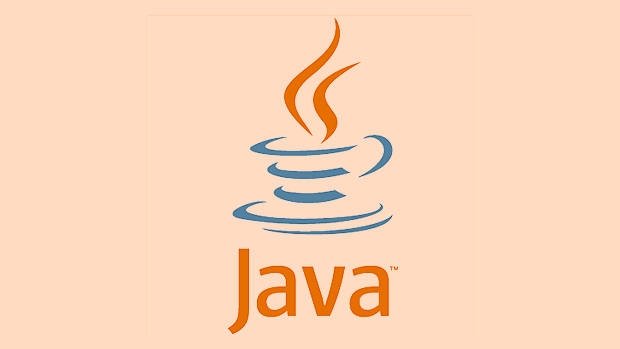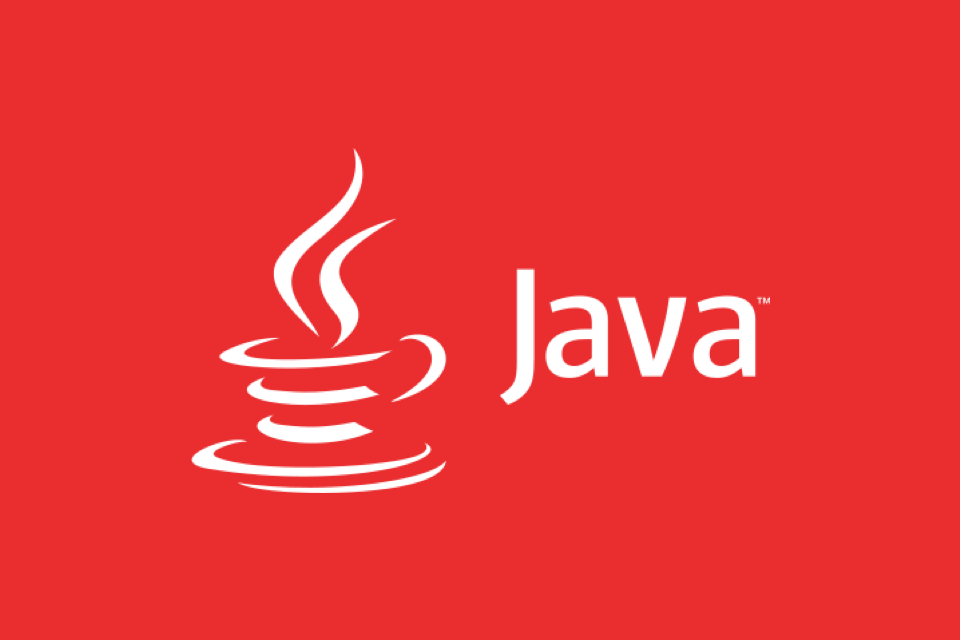SLF4J Logback has become the preferred solution for Java logging due to its flexibility, performance advantages and ecological support. 1. SLF4J is a log facade, allowing the underlying implementation to be switched without changing the code; 2. Logback is its native implementation, with better performance than Log4j and rich configuration; 3. Spring Boot and most open source libraries integrate this combination by default to avoid binding conflicts; 4. Support multi-environment logging policy through logback-spring.xml configuration file; 5. Use RollingFileAppender to implement log archiving and automatic cleaning; 6. AsyncAppender improves log writing performance; 7. Reasonably set the log level (TRACE/DEBUG/INFO/WARN/ERROR) and combine MDC context information to assist in troubleshooting problems.

Logging is a key but often overlooked part of Java application development. SLF4J and Logback are the most popular set of log facades and implementation combinations. They are not only good in performance, powerful in functionality, but also flexible in configuration. If you want to implement an efficient and maintainable logging system in your project, it is particularly important to master the basic use of these two and some advanced techniques.

Why choose SLF4J Logback?
There are many combinations of Java logging ecosystems, such as using java.util.logging, Apache Commons Logging or Log4j directly. SLF4J (Simple Logging Facade for Java) is the abstraction layer of logs, allowing you to switch the underlying log implementation without modifying the code. Logback is a native implementation of SLF4J, developed by the same author, has better performance than Log4j, and supports richer configuration options.
Common combinations include:

- Spring Boot uses SLF4J Logback by default
- Many open source libraries also rely on SLF4J by default, avoiding the problem of log binding conflicts.
So if you are working on a new project or microservice, this combination is almost the first choice.
Basic configuration: Start with logback-spring.xml
Spring Boot recommends using logback-spring.xml for log configuration. It supports Spring's profile function and can set different log levels or output formats for different environments.

A typical configuration file structure is as follows:
<configuration>
<appender name="STDOUT" class="ch.qos.logback.core.ConsoleAppender">
<encoder>
<pattern>%d{yyyy-MM-dd HH:mm:ss} [%thread] %-5level %logger{36} - %msg%n</pattern>
</encoder>
</appender>
<root level="info">
<appender-ref ref="STDOUT" />
</root>
</configuration> This configuration defines a console output (ConsoleAppender) and sets the log output format. %d represents a timestamp, %level is the log level, %logger is the class name for printing the log, and %msg is the specific log information.
You can set different log levels for specific packages through <logger> tag, for example:
<logger name="com.example.service" level="debug"/>
This way you can only enable debug level logs for certain modules without affecting the global log volume.
Advanced Tips: Log Archives and Asynchronous Output
When your application is deployed in a production environment, the log volume often becomes very large. At this time, you need to consider two issues:
- How to manage log file size and lifecycle
- How to reduce the impact of log writing on main process performance
File Archive: Use RollingFileAppender
Logback provides RollingFileAppender , which can scroll log files by day or by size and retain a certain number of historical files. For example:
<appender name="FILE" class="ch.qos.logback.core.rolling.RollingFileAppender">
<file>logs/app.log</file>
<rollingPolicy class="ch.qos.logback.core.rolling.TimeBasedRollingPolicy">
<!-- Generate a new log file every day->
<fileNamePattern>logs/app.%d{yyyy-MM-dd}.log</fileNamePattern>
<!-- Keep logs for the last 7 days-->
<maxHistory>7</maxHistory>
</rollingPolicy>
<encoder>
<pattern>%d{HH:mm:ss.SSS} [%thread] %-5level %logger{36} - %msg%n</pattern>
</encoder>
</appender>This way you don't need to manually clean the log files, and you can easily find logs by date.
Asynchronous output: Improve performance
Log writing is usually an IO operation and may affect main thread performance. Logback supports asynchronous writing of logs to reduce the impact on the main process.
You can use AsyncAppender to wrap other appenders:
<appender name="ASYNC" class="ch.qos.logback.classic.AsyncAppender">
<appender-ref ref="FILE" />
</appender>Note: Asynchronous logs may cause confusion in the log sequence, or lose some logs when the program exits abnormally. It can be decided whether to enable it according to actual needs.
Log level control and debugging suggestions
Log levels generally include TRACE, DEBUG, INFO, WARN, and ERROR. Using these levels reasonably can help quickly locate problems.
- TRACE : The most detailed log for tracking method calls or variable state changes
- DEBUG : debug information, suitable for use in development/testing stage
- INFO : Normal operation information, suitable for production environment
- WARN/ERROR : Output when there is a potential problem or error
suggestion:
- Maintain INFO level or above in the production environment to avoid excessive logs affecting performance
- Use MDC (Mapped Diagnostic Context) to add context information, such as user ID, request ID, etc., to facilitate troubleshooting
- Do not print large objects frequently, as they can easily cause performance bottlenecks
Basically that's it. With this in mind, you can already be proficient in log management using SLF4J and Logback in most projects.
The above is the detailed content of Advanced Java Logging with SLF4J and Logback. For more information, please follow other related articles on the PHP Chinese website!

Hot AI Tools

Undress AI Tool
Undress images for free

Undresser.AI Undress
AI-powered app for creating realistic nude photos

AI Clothes Remover
Online AI tool for removing clothes from photos.

Clothoff.io
AI clothes remover

Video Face Swap
Swap faces in any video effortlessly with our completely free AI face swap tool!

Hot Article

Hot Tools

Notepad++7.3.1
Easy-to-use and free code editor

SublimeText3 Chinese version
Chinese version, very easy to use

Zend Studio 13.0.1
Powerful PHP integrated development environment

Dreamweaver CS6
Visual web development tools

SublimeText3 Mac version
God-level code editing software (SublimeText3)
 Asynchronous Programming Techniques in Modern Java
Jul 07, 2025 am 02:24 AM
Asynchronous Programming Techniques in Modern Java
Jul 07, 2025 am 02:24 AM
Java supports asynchronous programming including the use of CompletableFuture, responsive streams (such as ProjectReactor), and virtual threads in Java19. 1.CompletableFuture improves code readability and maintenance through chain calls, and supports task orchestration and exception handling; 2. ProjectReactor provides Mono and Flux types to implement responsive programming, with backpressure mechanism and rich operators; 3. Virtual threads reduce concurrency costs, are suitable for I/O-intensive tasks, and are lighter and easier to expand than traditional platform threads. Each method has applicable scenarios, and appropriate tools should be selected according to your needs and mixed models should be avoided to maintain simplicity
 Best Practices for Using Enums in Java
Jul 07, 2025 am 02:35 AM
Best Practices for Using Enums in Java
Jul 07, 2025 am 02:35 AM
In Java, enums are suitable for representing fixed constant sets. Best practices include: 1. Use enum to represent fixed state or options to improve type safety and readability; 2. Add properties and methods to enums to enhance flexibility, such as defining fields, constructors, helper methods, etc.; 3. Use EnumMap and EnumSet to improve performance and type safety because they are more efficient based on arrays; 4. Avoid abuse of enums, such as dynamic values, frequent changes or complex logic scenarios, which should be replaced by other methods. Correct use of enum can improve code quality and reduce errors, but you need to pay attention to its applicable boundaries.
 Understanding Java NIO and Its Advantages
Jul 08, 2025 am 02:55 AM
Understanding Java NIO and Its Advantages
Jul 08, 2025 am 02:55 AM
JavaNIO is a new IOAPI introduced by Java 1.4. 1) is aimed at buffers and channels, 2) contains Buffer, Channel and Selector core components, 3) supports non-blocking mode, and 4) handles concurrent connections more efficiently than traditional IO. Its advantages are reflected in: 1) Non-blocking IO reduces thread overhead, 2) Buffer improves data transmission efficiency, 3) Selector realizes multiplexing, and 4) Memory mapping speeds up file reading and writing. Note when using: 1) The flip/clear operation of the Buffer is easy to be confused, 2) Incomplete data needs to be processed manually without blocking, 3) Selector registration must be canceled in time, 4) NIO is not suitable for all scenarios.
 How Java ClassLoaders Work Internally
Jul 06, 2025 am 02:53 AM
How Java ClassLoaders Work Internally
Jul 06, 2025 am 02:53 AM
Java's class loading mechanism is implemented through ClassLoader, and its core workflow is divided into three stages: loading, linking and initialization. During the loading phase, ClassLoader dynamically reads the bytecode of the class and creates Class objects; links include verifying the correctness of the class, allocating memory to static variables, and parsing symbol references; initialization performs static code blocks and static variable assignments. Class loading adopts the parent delegation model, and prioritizes the parent class loader to find classes, and try Bootstrap, Extension, and ApplicationClassLoader in turn to ensure that the core class library is safe and avoids duplicate loading. Developers can customize ClassLoader, such as URLClassL
 Handling Common Java Exceptions Effectively
Jul 05, 2025 am 02:35 AM
Handling Common Java Exceptions Effectively
Jul 05, 2025 am 02:35 AM
The key to Java exception handling is to distinguish between checked and unchecked exceptions and use try-catch, finally and logging reasonably. 1. Checked exceptions such as IOException need to be forced to handle, which is suitable for expected external problems; 2. Unchecked exceptions such as NullPointerException are usually caused by program logic errors and are runtime errors; 3. When catching exceptions, they should be specific and clear to avoid general capture of Exception; 4. It is recommended to use try-with-resources to automatically close resources to reduce manual cleaning of code; 5. In exception handling, detailed information should be recorded in combination with log frameworks to facilitate later
 How does a HashMap work internally in Java?
Jul 15, 2025 am 03:10 AM
How does a HashMap work internally in Java?
Jul 15, 2025 am 03:10 AM
HashMap implements key-value pair storage through hash tables in Java, and its core lies in quickly positioning data locations. 1. First use the hashCode() method of the key to generate a hash value and convert it into an array index through bit operations; 2. Different objects may generate the same hash value, resulting in conflicts. At this time, the node is mounted in the form of a linked list. After JDK8, the linked list is too long (default length 8) and it will be converted to a red and black tree to improve efficiency; 3. When using a custom class as a key, the equals() and hashCode() methods must be rewritten; 4. HashMap dynamically expands capacity. When the number of elements exceeds the capacity and multiplies by the load factor (default 0.75), expand and rehash; 5. HashMap is not thread-safe, and Concu should be used in multithreaded
 Explained: Java Polymorphism in Object-Oriented Programming
Jul 05, 2025 am 02:52 AM
Explained: Java Polymorphism in Object-Oriented Programming
Jul 05, 2025 am 02:52 AM
Polymorphism is one of the core features of Java object-oriented programming. Its core lies in "one interface, multiple implementations". It implements a unified interface to handle the behavior of different objects through inheritance, method rewriting and upward transformation. 1. Polymorphism allows the parent class to refer to subclass objects, and the corresponding methods are called according to the actual object during runtime; 2. The implementation needs to meet the three conditions of inheritance relationship, method rewriting and upward transformation; 3. It is often used to uniformly handle different subclass objects, collection storage and framework design; 4. When used, only the methods defined by the parent class can be called. New methods added to subclasses need to be transformed downward and accessed, and pay attention to type safety.
 Effective Use of Java Enums and Best Practices
Jul 07, 2025 am 02:43 AM
Effective Use of Java Enums and Best Practices
Jul 07, 2025 am 02:43 AM
Java enumerations not only represent constants, but can also encapsulate behavior, carry data, and implement interfaces. 1. Enumeration is a class used to define fixed instances, such as week and state, which is safer than strings or integers; 2. It can carry data and methods, such as passing values ??through constructors and providing access methods; 3. It can use switch to handle different logics, with clear structure; 4. It can implement interfaces or abstract methods to make differentiated behaviors of different enumeration values; 5. Pay attention to avoid abuse, hard-code comparison, dependence on ordinal values, and reasonably naming and serialization.






